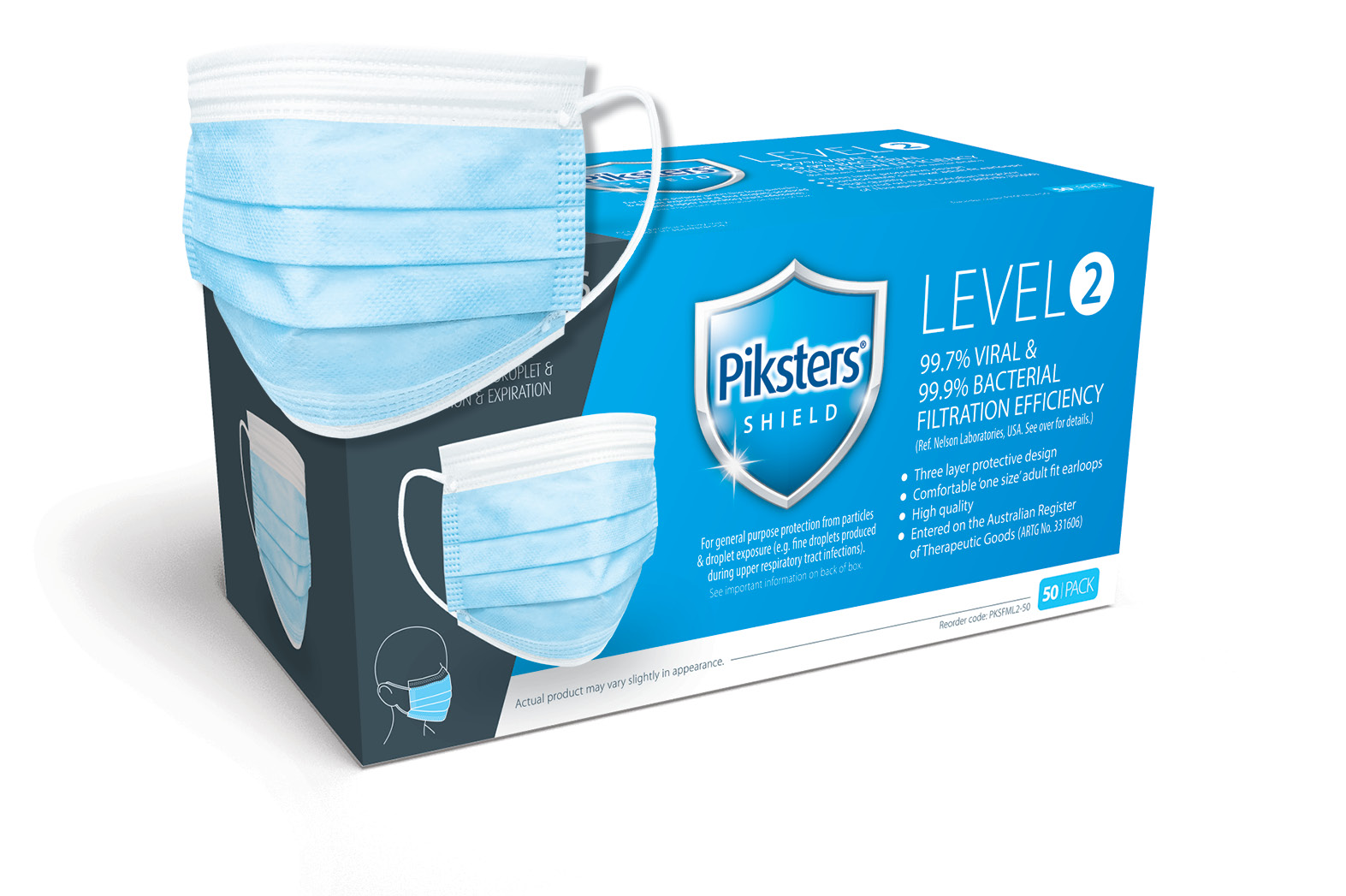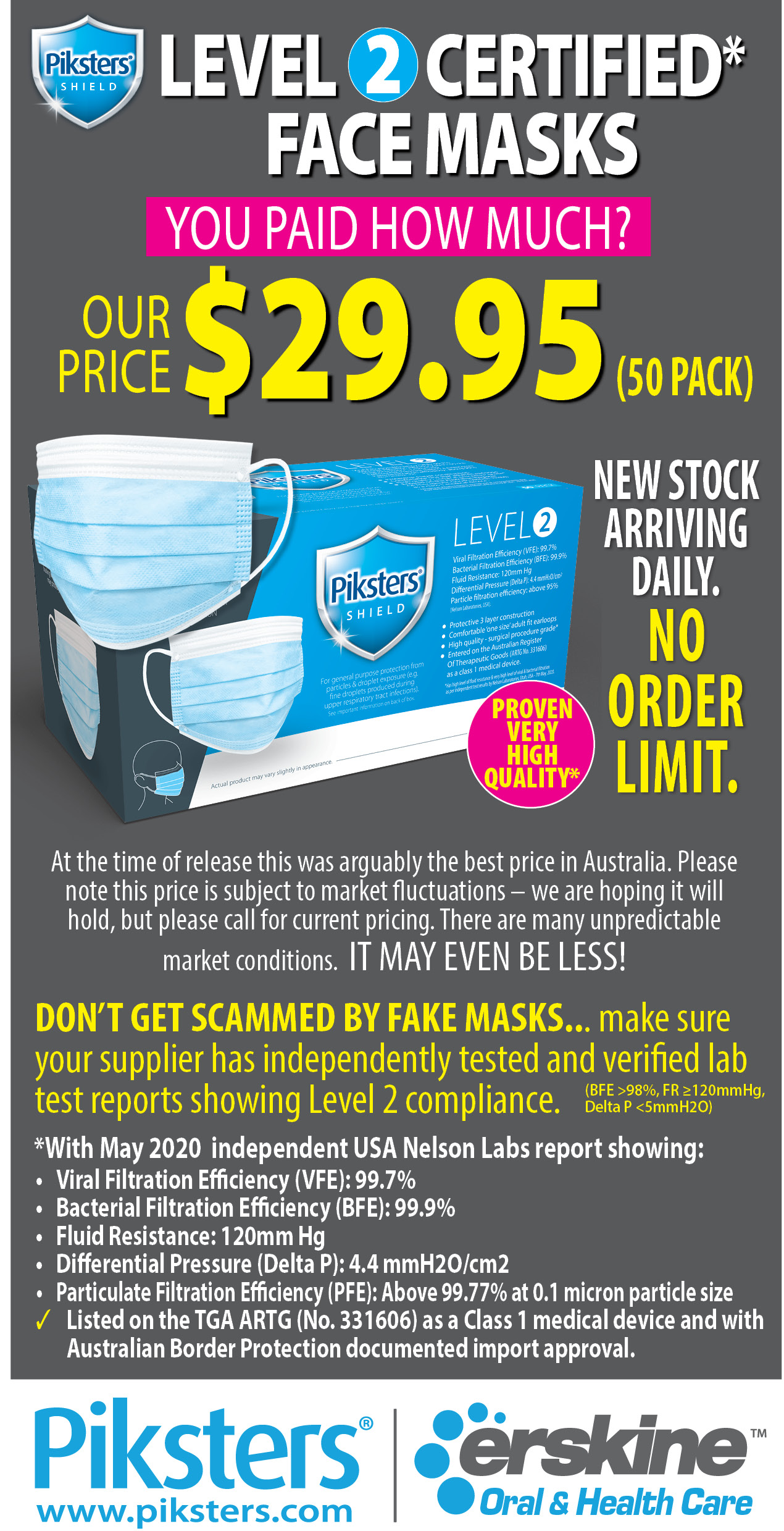Not all face masks follow The Australian Standard (AS 4381: 2015). Learn how to confirm how you buy and use masks with accepted safety standards.
An overview of the problems with face mask supply to the medical sector.
The Australian Standard for medical masks (AS 4381: 2015) is explained and advice on how to question, challenge and confirm masks you buy or use are at accepted safe standards provided.
Sadly, the Australian market has been flooded by poor quality masks that don’t provide enough protection for healthcare workers (the TGA is currently investigating listed devices). The masks defects are not always obvious from either the packaging or by non-microscopic inspection. Some can look and feel like a suitable mask despite falling well short of the Australian performance requirements.
What is the Australian Standard?
Surgical or medical face masks are classified as Level 1, 2 or 3 under the AS 4381: 2015. They are categorised according to:
- Their bacterial filtration efficiency (BFE)
- Their resistance to blood and fluid penetration as a splash at about an arterial pressure.
- Their breathability (the differential pressure inside versus outside of the mask fabric)
Note that Australian Healthcare standards do not require a measure of particle filtration or a viral filtration efficiency rating, although this may be provided by the reports from the manufacturer.
Also note some N95 masks, which are mainly used for dust and particle filtration to 95% of defined 0.1 um particles, may be less effective against clinical challenges involving fluids. The hydrophobic layer in AS 4381 masks is to prevent splash, fluids and droplets coming through your mask. Tip: you can do a very rough test for hydrophobicity yourself by putting a cup of water into your mask – it should hold the water without leaking if it is level 2 (the actual test is a blood-like viscous fluid fired from a gun at 120mmHg, not a static, sustained pressure). However, if you have a fake medical mask, e.g. layers of paper or cotton it will leak. Likewise, tiny droplets or aerosols of fluid created in sneezes & coughs may get through as well. A proper hydrophobic layer allows air but stops fluid.
Level 1 face masks filter at least 95% of bacteria and resist splashes at 80mmHg (typical diastolic blood pressure). These are suitable for consultations with patients with URTI’s, and clinical procedures where the risk of splashes is low.
Level 2 face masks filter at least 98% of bacteria and resist splashes to 120mmHg (e.g. a cut artery at normal systolic blood pressure). They are suitable for use during procedures where light to moderate splashes and aerosols are expected such as biopsies, wound debridement/ closures and dentistry etc.
Level 3 masks filter at least 98% of bacteria and resist splashes to 160mmHg. They are intended for procedures that generate large amounts of aerosols or where the risk of splashes is high. These are generally required for more invasive surgical procedures that are typically performed under general anaesthesia.
How to Spot Fake Masks
The easiest way to avoid being scammed is to ask your supplier the questions below. If they pass, get a sample and tip a cup of water into it. If it leaks it’s probably not Level 2, and it probably doesn’t have a hydrophobic layer. Some test certificates are photocopies from other suppliers, forgeries etc so if possible, ask the supplier why they are confident of the test certificate authenticity. Here are some other questions.
- Is your product entered on the ARTG (Australian Register of Therapeutic Goods) as a medical device?
Every mask sold to healthcare providers must be. However, it is still very easy to list a substandard mask on the ARTG and listing the product per se does not prove its conformity to the Australian Standard! So, keep asking…
- What Australian Standard level are the surgical masks rated at? Can I have evidence of conformity?
Some suppliers will not know the mask level or will say incorrect things … for example one company said the masks were level 2, but their technical report had no evidence of a breathability test or fluid resistance, so it couldn’t pass the level 2 requirements despite their assertions it was Level 2. Beware of masks that don’t specifically address the Australian Standard and its requirements. Also bear in mind a CE Type II face mask is not equivalent to an Australian Level 2. (Europe has no splash resistance requirement till it is rated Type llR)
- Are the masks AS 4381 compliant? Does the supplier know what technical parameters are required to make it comply?
Some suppliers we speak to are unaware of exactly what is required of masks of different levels. If they themselves don’t know how to verify the quality of the products they sell it is unlikely that you are getting what you pay for. Some masks are marketed as compliant and might meet some of the criteria such as the BFE but fail in other areas such as breathability or fluid resistance.
- Have the masks been INDEPENDENTLY tested for compliance?
The lowest level of evidence is a “declaration of conformity”. Traditionally this has been acceptable. We strongly recommend against that now. Given the widespread distribution of substandard masks it is best to ask the supplier if they have independent and preferably internationally-recognised test reports proving their claimed BFE, fluid resistance and breathability (preferably from a lab not in the same country as where the masks are manufactured).



